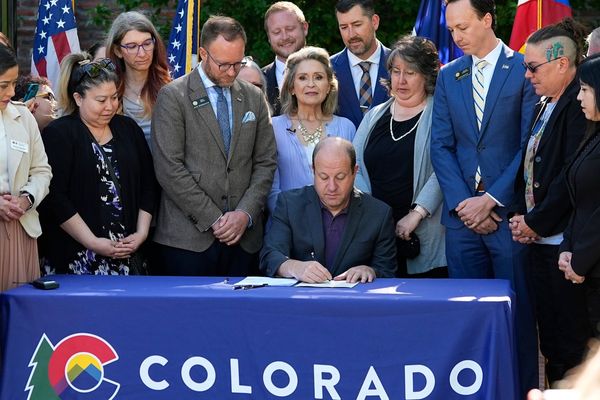
Living in a 55 and older (retirement) community can offer a vibrant lifestyle with built-in amenities, minimal upkeep and a strong sense of community, but what’s the actual cost over time?
Trending Now: 4 Retirement Expenses Boomers Didn’t Plan for — but Should Have
For You: 10 Unreliable SUVs To Stay Away From Buying
The average retirement community member has to factor in expenses such as HOA fees, property taxes and buy-in costs. Over 10, 20 or 30 years, the total costs can accumulate differently depending on the chosen housing option.
From one-time entry fees to recurring maintenance costs, here’s the cost for boomers to retire and live in a retirement community — and whether it’s worth it.
Upfront Costs To Expect
Before enjoying the perks of retirement community living, retirees should prepare for significant upfront costs. These typically include home purchase or rental fees, closing costs and in some cases, steep entry fees based on the community type.
“Many communities require a one-time entrance fee that ranges from $5,000 to $300,000, depending on whether it’s a rental or buy-in Continuing Care Retirement Community,” said Jonathan Garini, investor and CEO of Fifth Element, who is currently planning his own retirement.
Check Out: What $1 Million in Retirement Savings Looks Like in Monthly Spending
Buy-in Continuing Care Retirement Communities (CCRCs) tend to have higher entry fees but may offer long-term care options in exchange. Meanwhile, more affordable rental-based retirement communities might still charge administrative fees or deposits upfront. Either way, it’s essential for retirees to factor in these initial costs when budgeting for a long-term move.
Monthly Costs To Expect
Most retirees spend $3,000 to $6,500 per month in a retirement community. This includes base fees, services such as meals and housekeeping and housing costs, including rent, mortgage payments, HOA fees and maintenance.
“Here is what your typical monthly cost could look like if you lived in a mid-ranged retirement community. Your base monthly fees would be about $500 to $1,000 for recreational events and activities,” said Oren Sofrin, real estate expert at Eagle Cash Buyers LLC.
“Additional costs like utilities, food, transportation, optional services like housekeeping, meal plans and lawn care should be about $1,500 to $3,000, while homeownership costs, mortgage payments, HOA fees and maintenance, should be about $1,000 to $2,500 per month,” he explained.
Location Greatly Affects Cost
Beyond entry fees, geography is one of the biggest factors influencing the cost of retirement community living. Prices vary significantly between rural areas and coastal cities and depend heavily on the availability of services and amenities.
“When I review budgets for the seniors and retirees I advise, the ‘all in’ monthly spend, housing plus mandatory services, usually falls between the mid-$2,000s and a bit over $5,000,” said Yehuda Tropper, CEO of Beca Life Settlements.
Tropper explained the national average is about $3,000 per month, though it can exceed $6,000 in high-cost coastal markets with full continuing care contracts. These fees may include utilities, internet, meals and transportation, which can help reduce sticker shock.
Popular retirement spots, such as Florida and Southern California, tend to be pricier, especially when it comes to resort-style or care-focused offerings. More affordable options are often found in the Midwest or the inland Southwest.
“Geography, contract type and amenity level, golf course versus walking trail, explain most of the spread,” Tropper said.
Long-Term Costs Over 10, 20 and 30 Years
Understanding how monthly expenses compound over time is essential for retirees planning to stay in a retirement community long term.
Even modest annual increases can add up significantly, especially when compounded by inflation, service packages and rising HOA fees.
John Enwere, certified nursing assistant and founder of Caringene, a home care start-up for older adults in Washington state, said that assuming a $4,000 monthly cost with 3% inflation, the total out-of-pocket would be around $550,000 over 10 years, $1.3 million over 20 and $2.2 million over 30.
Is It Worth It?
Ultimately, whether living in a retirement community is worth it depends on personal priorities and how much value is placed on ease, access to care and social connection.
“It’s worth it when form, function and community matter, especially for the singles, friends, child-free and local family-free and the mildly mobility- or memory-impaired,” said Jacob Naig, real estate expert in Des Moines, Iowa.
More From GOBankingRates
- New Law Could Make Electricity Bills Skyrocket in These 4 States
- I'm a Self-Made Millionaire: 6 Ways I Use ChatGPT To Make a Lot of Money
- 5 Strategies High-Net-Worth Families Use To Build Generational Wealth
- Mark Cuban Tells Americans To Stock Up on Consumables as Trump's Tariffs Hit -- Here's What To Buy
This article originally appeared on GOBankingRates.com: The Cost for Boomers To Retire at 55+ Communities







